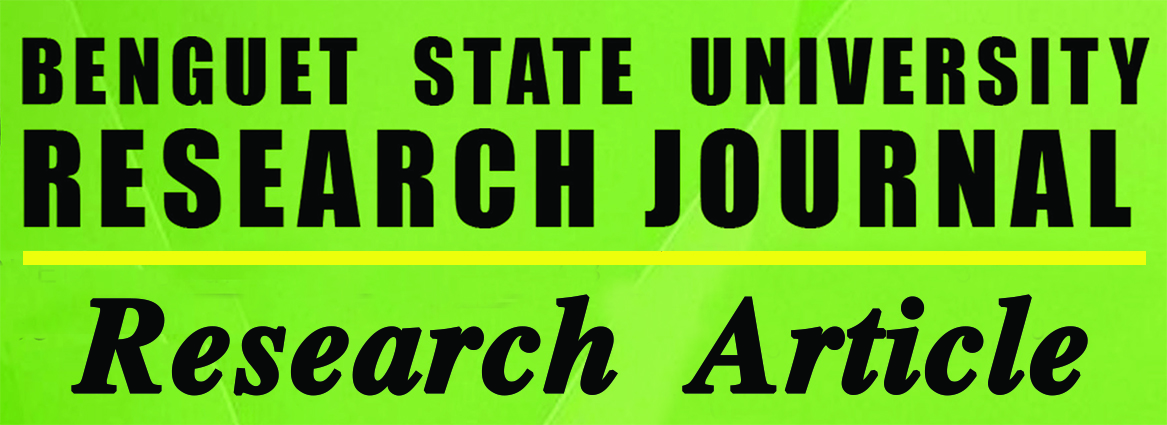Growing Areas and Traditional Production Practices of Arabica Coffee in Benguet
Main Article Content
Abstract
The research was conducted to identify the specific growing areas and traditional production and conservation practices on Arabica coffee in the different municipalities of Benguet.
Locations of Arabica coffee production areas were obtained using a handheld Global Positioning System (GPS) navigation device and processed through ArcView software to generate maps. A survey instrument was pre-tested then formal and informal interviews were conducted with 106 coffee growers in the 13 municipalities of Benguet. Secondary data were obtained from the local government units and other government agencies.
Arabica coffee in Benguet thrives at elevations ranging from 531 to 1,800 m asl classified under three agro-ecological zones; the high hills, low mountain and mid-mountain zones. The high hills zone with elevations from 500-1,000 m asl had temperatures ranging from 28.95-32.30C; areas under low mountain zones had elevations from 1,001 to 1,500 m with temperature range of 25.43-28.0 0C and the mid-mountain zone (1,501-2,000 m asl) has temperature range of 18.0-24.00C.
The common cropping pattern practiced among the coffee growers was the combination Arabica coffee with agricultural crops and woody perennials. Production and conservation practices of Arabica coffee growers such as raising seedlings in a nursery or in shaded areas, transplanting of wildlings growing under coffee plants to a new growing site, and rejuvenation through tapping or capping and pruning of old Arabica coffee trees were noted. Production practices observed by Arabica coffee growers was mainly organic. There was non-application of synthetic fertilizers and pesticides among Arabica coffee growers.

